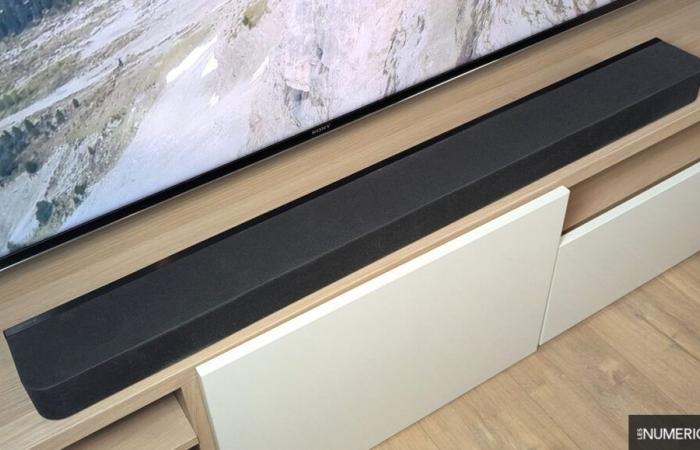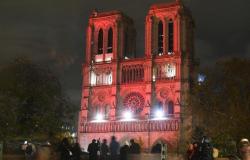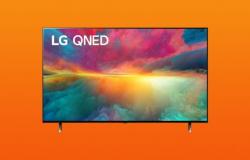The 2024 vintage of Sony soundbars is definitely one of change. Its Bravia Theater Bar 8 and Bravia Theater Bar 9 models not only display a less barbaric nomenclature for the general public, they opt for a more refined dimension, which includes design, connectivity and user experience. A way to integrate these models into a unified ecosystem, placed under the aegis of the Bravia Connect app.
For the rest, Sony is pulling out all the stops and developing with the Bravia Theater Bar 8 a technological demonstration marked by an architecture truly designed for Dolby Atmos (vertical speakers). Above all, the manufacturer maintains compatibility here with its optional modules, such as the SA-SW3 and SA-SW5 subwoofers, as well as the SA-RS3S and SA-RS5 rear satellites.
Price and availability
The Sony Bravia Theater Bar 8 has been available since May 2024 at the official price of €990.
Test conditions
We tested this product under firmware version 1.241, with the dedicated Sony Bravia Connect app under version 3.1.1.
Construction
Even more sober, but at least as premium as its predecessor HT-A5000, the Bravia Theater Bar 8 undoubtedly loses in identity what it gains in maturity. This model, very versatile despite its 1110 mm length, is the versatile soundbar par excellence. Not too high (64 mm) nor too deep (113 mm), it is perfectly suited to screens of 55 inches and above.
Unlike what was practiced on the previous iteration of the HT-A bars, Sony attempts to camouflage the slightest bit of plastic by wrapping almost the entire chassis with a layer of matte (recycled) fabric. Although subject to dust, this coating provides a feeling of quality. Only the discreet rear plate, which houses the connectors, leaves a little plastic visible.
Without displaying the sophistication of a Devialet Dione, the Theater Bar 8 has no real faults. Its body is relatively dense and presents no assembly problems.
Accessories
Getting straight to the point, Sony delivers its device with a remote control, a mains cable, an HDMI cable, a jack to jack cable for the S-Center function, as well as a support for wall mounting (with model).

Wireless connectivity & broadcasting
The Sony Bravia Theater Bar 8 does not escape the minimalist turn of the new range of sound bars. But unlike the Theater Bar 9, which had a real sound hub as its predecessor, the transition from the HT-A5000 to the Bar 8 is less painful.
The fact remains that this product is particularly Spartan. We are therefore only entitled to an HDMI 2.1 input (4K/120 Hz VRR and ALLM compatible), an HDMI eARC port and an S-Center output allowing us to use the speakers of modern Bravia televisions. Thus the optical Toslink socket and the USB-A port for reading local files (on a key) disappear.
This fairly simple connection is accompanied by a slightly more elaborate, but incomplete, wireless dimension. For Bluetooth, Sony has placed a chip compatible with its in-house codec, LDAC.
Via its wifi chip, the Bravia Theater Bar 8 is compatible with the AirPlay 2 and Spotify Connect network protocols. No word yet on future Chromecast and Alexacast support, protocols that were supported on the previous iteration. Unsurprisingly, the absence of microphones on the bar means no support for voice assistants.

User experience
Sony's policy does not only affect connectivity and wireless protocols, it extends to the user experience in general. This orientation is good, but it remains very questionable on other aspects.
Let's start with the good stuff. The Bravia Connect app, although it no longer allows you to configure the Bravia Theater Bar 8 directly on your TV screen, supports the beginner user quite well. The configuration of the product is intuitive, and above all very quick. Likewise, this application avoids falling into an excess of menus and submenus, everything is accessible very quickly. Even the acoustic calibration, carried out using the smartphone's microphone, is a particularly quick process here.
The downside is that there are fewer settings than before, although the majority of users can find what they want. In particular, we can adjust the bass, directly access the three main sound modes (Night mode, Sound field, Voice mode) and slightly improve the vertical effects. However, it is very frustrating to have to log in to a Sony account to use the application.
Concerning the controls and the on-board interface, simplification turns to austerity. The intuitive remote control ignores any advanced settings, including adjusting the surround or bass channels, which is problematic when pairing with a subwoofer or optional satellites.
But the most frustrating element of this user experience is the soundbar itself. In addition to not having any control button (only an on/off appendage), its only display is a duo of LEDs. The right LED indicates the current entry using a color code (white for HDMI eARC, green for HDMI, dark blue for Bluetooth, light blue for network), while the left LED flashes as soon as an action is validated. It is therefore impossible to check the volume or level of this or that channel.

Audio
A sort of simplified Bar 9, the Bar 8 nonetheless has an ambitious audio architecture, 5.1.2 type. This includes no less than 11 speakers (9 on the HT-A5000) distributed as follows: four woofers (bass) on the front, two of which (on the sides) each associated with a small dome tweeter, a high -central dome speaker (for vocals and treble), two full-range speakers on the sides (Surround); finally, two type speakers up-firing (Atmos). All 11 transducers are powered by a dedicated Sony S-Master HX digital amplifier.
In the sound continuity of its predecessor, this soundbar retains one of the strengths of the high-end models made in Sonynamely great versatility and real technical mastery. The Bravia Theater Bar 8 reproduces balanced sound, which makes it equally at home in video and musical use. This balance, which begins in the low-mids, is only altered by a very slight withdrawal of the treble, which fortunately does not translate into a lack of sound ventilation or a low level of detail, on the contrary.
Like its big sister Theater Bar 9, this soundbar remains a bit limited at the bottom of the spectrum. If the extension is very correct in this area, especially leaving the bass setting on Max (quite recommended), the drop is quite brutal below 60 Hz. To put it simply, the feeling of power is there, all the more that Sony's creation is quite responsive, but the absence of a subwoofer is felt. It still lacks the seat, but above all the cleanliness in the rendering. The Bar 8 tends to overflow more than the Bar 9, especially when pushing the bass all the way. So, if this last setting is often preferable for films, we advise being more parsimonious for music.
Very rich in the mids and highs, the Theater Bar 8 develops a good level of detail and good dynamics. These frequency ranges never leave a feeling of lack or excess. On the other hand, some inaccuracies appear here and there at high volume, a phenomenon that we have already observed on the Theater Bar 9. These inaccuracies are reflected in particular on the treble, which is slightly pinching when listening. However, this defect is barely audible when watching a film.
If musical use is much more convincing by deactivating the sound modes and keeping the settings as neutral as possible, video applications benefit quite well from Sony's in-house processing, starting with the Soundfield. This mode disrupts the tonal balance, breaks the concept of sound fidelity a little, but the result is neither unpleasant nor out of balance.

Sound spatialization
Atmos type, the Bravia Theater Bar 8 is supported by the in-house Soundfield processing which relies on Sony's 360 Spatial technology as a rendering engine. Almost obligatory, this mode provides quite convincing spatialization which shines for its coherence and the precision of the effects, although the Bar 9 is superior in this regard.
It's simple, our customer of the day has the good features of the HT-A5000, namely a very good performance of the Surround effects which quite easily exceed the physical limits of the bar. Of course, there are no miracles on the rear channels and you absolutely have to go through rear satellites to benefit from such effects.
Concerning the Atmos effects, we are also dealing with a generally convincing product. The vertical dimension has a certain magnitude, however more marked on ambient sounds than on 3D objects, which do not go so far as to cross the room or rise to the ceiling.
Finally, dialogue management constitutes another strength of the Theater Bar 8. These are perfectly projected forward and detached from the rest of the sound reproduction, even when activating the Sound Field. This mode tends to give a little too much width to the central channel, but without making it lose its precision.
Points forts
-
Balanced and versatile sound.
-
Dimension Surround excellente.
-
Compatibility with the vast majority of audio formats.
-
Intuitiveness of the Bravia Connect app.
-
Build quality and compactness.
Weak points
-
No miracle in the low frequencies.
-
Stricky connectivity.
-
Quite a few settings available.
-
No controls on the bar, very limited display.
-
Disappearance of Chromecast compatibility.
Conclusion

How does the rating work?
An excellent evolution of the HT-A5000, the Sony Bravia Theater Bar 8 is a soundbar which, despite its fairly discreet format, distills a clever mix of sound and immersive qualities. But driven by a fever of simplification which affects both connectivity, the connected dimension and part of the user experience, the manufacturer hinders the attractiveness of this nevertheless convincing model.







